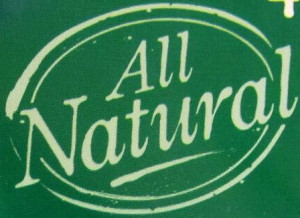In October, 1996, a 16-month-old in Denver drank Smoothie juice manufactured by Odwalla Inc. of Half Moon Bay, Calif. She died several weeks later; 64 others became ill in several western U.S. states and British Columbia after drinking the same juices, which contained unpasteurized apple cider – and E. coli O157:H7. Investigators believe that some of the apples used to make the cider may have been insufficiently washed after falling to the ground and coming into contact with deer feces.
 In the fall of 1998, I accompanied one of my then four daughters on a kindergarten trip to the farm. After petting the animals and touring the crops –I questioned the fresh manure on the strawberries – we were assured that all the food produced was natural. We then returned for unpasteurized apple cider. The host served the cider in a coffee urn, heated, so my concern about it being unpasteurized was abated. I asked: “Did you serve the cider heated because you heard about other outbreaks and were concerned about liability?” She responded, “No. The stuff starts to smell when it’s a few weeks old and heating removes the smell.”
In the fall of 1998, I accompanied one of my then four daughters on a kindergarten trip to the farm. After petting the animals and touring the crops –I questioned the fresh manure on the strawberries – we were assured that all the food produced was natural. We then returned for unpasteurized apple cider. The host served the cider in a coffee urn, heated, so my concern about it being unpasteurized was abated. I asked: “Did you serve the cider heated because you heard about other outbreaks and were concerned about liability?” She responded, “No. The stuff starts to smell when it’s a few weeks old and heating removes the smell.”
But despite the continual outbreaks – type apple cider into the barfblog.com search box – people want their cider all natural (whatever that means).
El Dorado County public health officials announced Friday that High Hill Ranch in Camino has initiated a voluntary recall of its unpasteurized apple juice because of suspected contamination, likely with the E. coli bacteria.
 Health officials are warning consumers to not drink and to dispose of any unpasteurized apple juice purchased from High Hill Ranch on or after Oct. 6.
Health officials are warning consumers to not drink and to dispose of any unpasteurized apple juice purchased from High Hill Ranch on or after Oct. 6.
The Sacramento County Department of Health and Human Services notified the El Dorado County Environmental Management and Public Health divisions this week of at least seven cases of E. coli illnesses among Sacramento County residents who consumed unpasteurized apple juice from High Hill Ranch in mid-October. The apple juice was consumed at home or at High Hill Ranch. One person has been hospitalized and is expected to recover, according to an El Dorado County news release.
The El Dorado County Environmental Management and Public Health divisions and the California Department of Public Health are working with the High Hill Ranch management to determine the source of the potential contamination. High Hill Ranch has pulled the product from the shelves.
The recall comes at the height of tourist season for El Dorado County’s Apple Hill area.
Jerry and Michelle Visman of High Hill Ranch issued a written statement saying that, due to health concerns, the free samples they have offered potential juice buyers at their ranch have been discontinued.
“We are also having the juice tested as a precaution to make absolutely sure all is well, because after making juice for 50 years and not having any complaints, we want to be sure that the good track record continues,” they said.
Here’s the abstract from a paper Amber Luedtke and I published back in 2002:
A review of North American apple cider outbreaks caused by E. coli O157:H7 demonstrated that in the U.S., government officials, cider producers, interest groups and the public were actively involved in reforming and reducing the risk associated with unpasteurized apple cider. In Canada, media coverage was limited and government agencies inadequately managed and communicated relevant updates or new documents to the industry and the public.
Therefore, a survey was conducted with fifteen apple cider producers in Ontario, Canada, to gain a better understanding of production practices and information sources. Small, seasonal operations in Ontario produce approximately 20,000 litres of cider per year. Improper processing procedures were employed by some operators, including the use of unwashed apples and not using sanitizers or labeling products accurately.
Most did not pasteurize or have additional safety measures. Larger cider producers ran year-long, with some producing in excess of 500,000 litres of cider. Most sold to large retail stores and have implemented safety measures such as HACCP plans, cider testing and pasteurization. All producers surveyed received government information on an irregular basis, and the motivation to ensure safe, high-quality apple cider was influenced by financial stability along with consumer and market demand, rather than by government enforcement.










